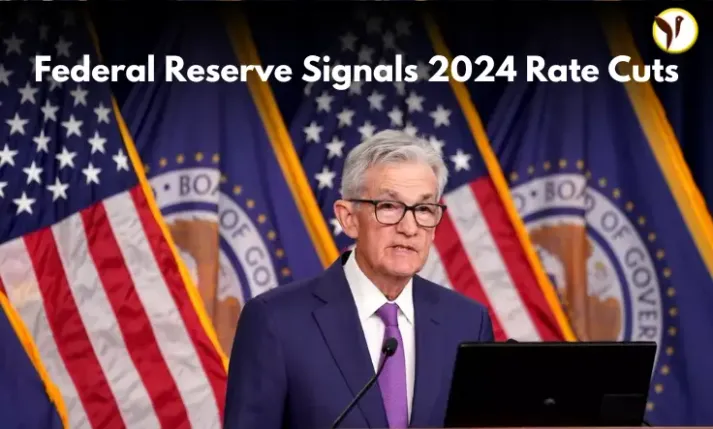In a highly anticipated action, the Federal Reserve confirmed Wednesday that interest rates will remain unchanged following its most recent meeting. This decision comes amid ongoing discussions about the best way ahead in the fight against persistent inflation. However, the central bank's prognosis has provided a silver lining, with three rate decreases expected in the coming year, indicating a potential shift in its monetary policy stance that has fueled market confidence.
As traders and investors digested the specifics of the Federal Reserve's announcement, the stock markets responded strongly. The Dow Jones Industrial Average, the S&P 500, and the Nasdaq Composite all rose, breaking out of their previous holding patterns to post gains.
Many economists and market experts were reassured by the Fed's decision to keep interest rates unchanged, since they had been closely monitoring the central bank's activities for clues of future policy direction. The announcement emphasized the Fed's cautious approach to balancing the twin goals of promoting economic development and managing inflation.
Chris Zaccarelli, Chief Investment Officer at Independent Advisor Alliance, expressed optimism, stating, "This 'no news is good news' press conference means the markets can continue their upward trend." The Fed is definitely not establishing itself as a barrier to the current bull market.
Michael Gregory, Deputy Chief Economist at BMO, echoed this sentiment, highlighting the Fed's tricky balancing. "The Fed's resolve is undoubtedly being tested by the economy's resiliency and inflationary pressures. However, it appears that the likelihood of rate decreases later this year remains alive, albeit the specific timing is still up for question."
Inflation Trends and Economic Projections
Despite recent reports of a tenacious inflationary trend, Federal Reserve Chair Jerome Powell expressed a cautious but optimistic stance during his post-meeting press conference. He noted that recent statistics did not substantially alter the Fed's view that inflation is on a downward path, with some volatility expected along the way.
The Federal Reserve's economic estimates reflect a cautious optimism. While inflation is now expected to reach the Fed's 2% target slightly later than previously planned, the central bank has also raised its growth forecast. The United States economy is expected to increase by 2.1% this year, up from 1.4% in December.
Global Currency Impacts and Forward Look
The dollar fell somewhat after the Fed announced its policy stance, reflecting currency traders' complex readings. The yen, on the other hand, demonstrated tenacity by recovering from previous lows, a move analysts ascribe to the larger context of global central bank policy.
Looking ahead, the Fed's projections and Chair Powell's words suggest that the central bank is treading carefully across a complicated economic landscape. The expectation of further rate decreases, along with a commitment to data-driven decision-making, indicates a cautious optimism about the road to long-term economic growth and inflation management.







